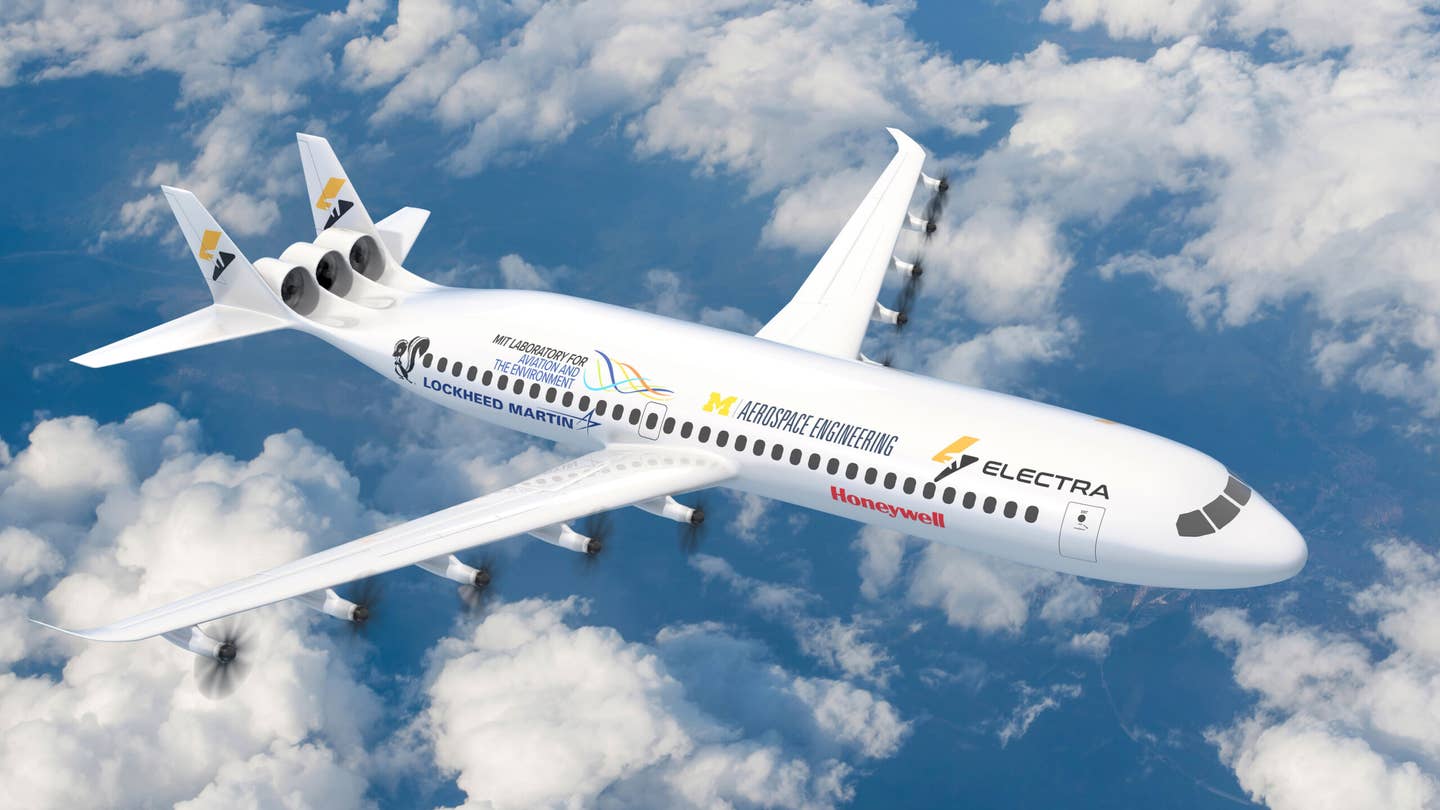NASA Taps Electra to Design Electric Commercial Airliner of the Future
Space agency is backing the development of a new generation of aircraft in order to help decarbonize the aviation industry.

Electra shared a concept for a decarbonized commercial airliner that uses its proprietary technology. [Courtesy: Electra]
NASA is backing the development of a new generation of all-electric commercial airliners that could start flying passengers within the next few decades.
The space agency on Tuesday tapped Electra—the manufacturer of a nine-passenger “ultra short” design that requires just 150 feet of runway for takeoff and landing—to develop the core technologies and design concepts for the futuristic, new generation of aircraft.
The contract was awarded to support NASA’s Advanced Aircraft Concepts for Environmental Sustainability (AACES) 2050 program, which aims to assert U.S. leadership in the decarbonization of commercial aviation. In recent years, aviation has accounted for about 2.4 percent of the world’s carbon emissions.
Electra’s research team will be led by Alejandra Uranga, the company’s chief engineer for research and future concepts.
“This work is part of the research NASA conducts under its Advanced Air Vehicles Program [AAVP],” said Barbara Esker, deputy administrator of programs for NASA’s Aeronautics Research Mission Directorate at its headquarters in Washington, D.C. “This new collaboration will help NASA and the private sector deliver new technologies to fulfill our mutual goal of cleaner skies in the decades ahead.”
Among other technologies, the AAVP studies hybrid-electric propulsion, supersonic and hypersonic flight, and electric air taxi noise and passenger comfort, which makes Electra a logical partner.
The company was founded by John Langford, the architect of Boeing subsidiary Aurora Flight Sciences, in 2020. But already Electra has completed several test flights of its EL-2 Goldfinch demonstrator, which uses a unique blown-lift propulsion system to achieve ultra short takeoff.
The design guides airflows over the wing and into large flaps and ailerons, which direct them downward to amplify lift. According to Electra, this allows the aircraft to take off while traveling as slow as a car driving through a residential neighborhood.
The company so far has collected more than 2,000 orders for its flagship, nine-passenger model from 52 airline customers, as well as several U.S. military contracts. It expects the aircraft to begin ferrying passengers and cargo by the end of the decade.
NASA, through AACES, is looking to gauge how Electra’s blown-lift technology would perform on a significantly larger model. On a smaller scale, the configuration offers 10 times the range and more than twice the payload of helicopters and electric vertical takeoff and landing (VTOL) designs, with 70 percent lower operating costs, per the company.
“Being selected by NASA for AACES is an important achievement for Electra,” said Uranga. “It validates our unique concepts and their potential scalability. We are honored with this opportunity from NASA to step up to the major leagues and help build a sustainable future for air transportation.”
An Electra spokesperson told FLYING the manufacturer will incorporate some of the early technologies developed during the AACES program on its production model, which it said will be called the EL9. That will let the partners test and potentially certify them in the real world before incorporating them on larger aircraft. Electra will reveal the EL9 at an event on Wednesday.
Though Electra is a young company, it recently added plenty of commercial aviation know-how with the appointment of B. Marc Allen, the former chief strategy officer of Boeing, as CEO. Bringing well over a decade of experience, Allen will lead the firm as it looks to shake up the commercial aviation industry.
Like this story? We think you'll also like the Future of FLYING newsletter sent every Thursday afternoon. Sign up now.

Sign-up for newsletters & special offers!
Get the latest FLYING stories & special offers delivered directly to your inbox






